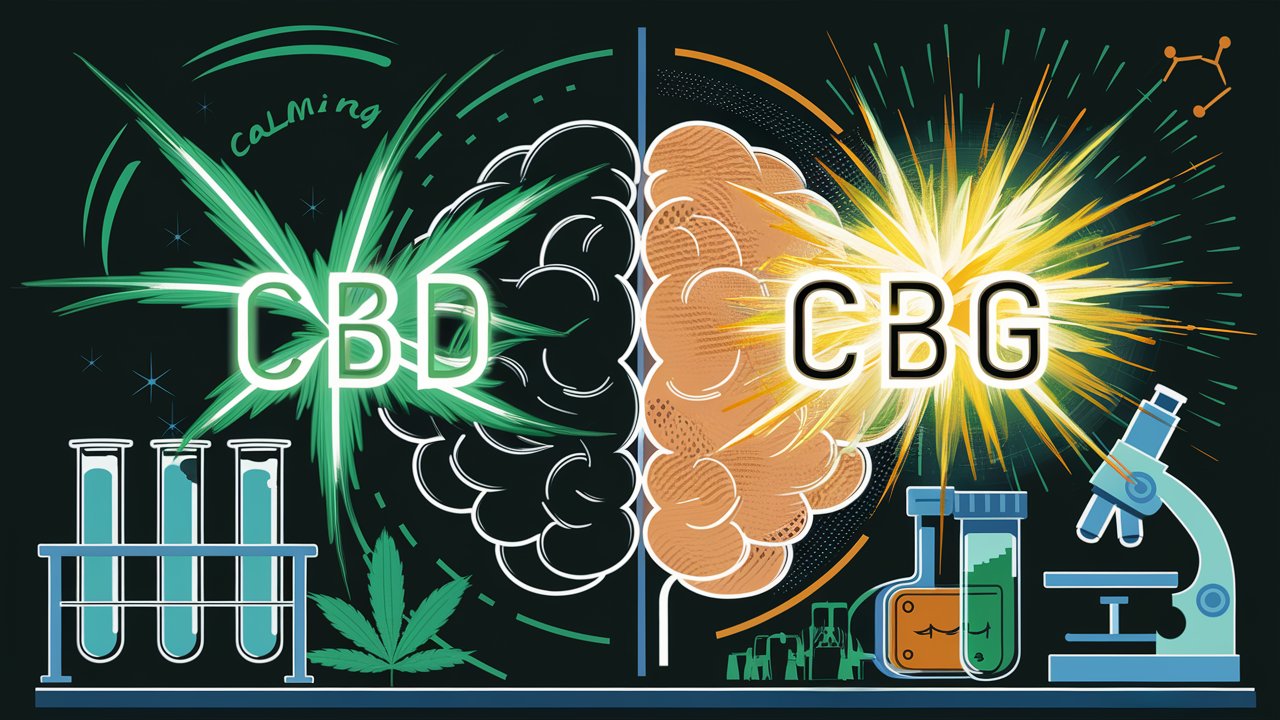In recent years, the world of cannabinoids has expanded beyond just THC and CBD, bringing Cannabigerol (CBG) into the spotlight. While both CBD (Cannabidiol) and CBG (Cannabigerol) offer significant health benefits, understanding their differences can help users make informed choices.
Chemical and Biological Differences
At the molecular level, CBD and CBG share a similar foundation, yet their chemical structures and biological mechanisms differ significantly. CBD, a well-known non-psychoactive cannabinoid, boasts a structure featuring two hydroxyl groups, whereas CBG, often referred to as the “mother cannabinoid,” contains a singular hydroxyl group. This subtle distinction in chemical composition influences how each interacts with the body’s endocannabinoid system (ECS).
CBD primarily interacts with the ECS by inhibiting the breakdown of anandamide, a cannabinoid naturally produced by the body. This interaction helps regulate mood, pain perception, and appetite. CBG, on the other hand, directly binds to both CB1 and CB2 receptors in the ECS. This binding is thought to enhance its ability to influence a variety of physiological processes, including inflammation and neuroprotection.
Therapeutic Benefits and Uses
When comparing the therapeutic benefits of CBD and CBG, it’s essential to consider their unique properties. CBD is renowned for its anti-inflammatory, anxiolytic, and analgesic properties. Numerous studies have demonstrated its effectiveness in reducing anxiety, alleviating chronic pain, and minimizing inflammation. For instance, a 2019 study published in The Permanente Journal highlighted CBD’s potential to reduce anxiety among a group of individuals with sleep and anxiety disorders.
CBG, though less studied, shows promise in various areas. Research indicates that CBG may have potent anti-inflammatory and neuroprotective properties. A 2015 study in Neurotherapeutics found that CBG could protect neurons in models of Huntington’s disease, suggesting its potential in treating neurodegenerative diseases. Furthermore, CBG’s antibacterial properties have been demonstrated in studies exploring its effectiveness against drug-resistant Staphylococcus aureus (MRSA).
Legal Status and Availability
The legal landscape for CBD and CBG varies significantly across regions. In the United States, the 2018 Farm Bill legalized hemp-derived CBD products containing less than 0.3% THC, paving the way for widespread availability. However, state regulations can differ, with some states imposing stricter guidelines on the sale and use of CBD products.
CBG’s legal status is less defined but generally follows the same regulations as CBD, given its non-psychoactive nature and derivation from hemp. The main challenge lies in the production cost and availability of CBG, as it is typically present in smaller quantities in the cannabis plant. This scarcity makes CBG products more expensive and less common in the market.
When choosing CBD or CBG products, it’s crucial to prioritize quality and safety. Look for products that have been third-party tested for potency and purity. Ensure they are free from contaminants such as heavy metals, pesticides, and residual solvents. Transparent labeling and sourcing from reputable manufacturers can provide additional assurance of a product’s integrity.
Conclusion
CBD and CBG each offer unique benefits, driven by their distinct chemical structures and interactions with the endocannabinoid system. While CBD is celebrated for its broad range of therapeutic applications, including anxiety and pain relief, CBG is emerging as a potent anti-inflammatory and neuroprotective agent. Understanding these differences, along with the legal status and availability of each cannabinoid, empowers users to make informed decisions tailored to their health needs. As research continues to unfold, the potential of these cannabinoids promises to revolutionize natural health solutions.
Medical Disclaimer: The information provided in this article is for educational purposes only and is not intended as a substitute for professional medical advice, diagnosis, or treatment. Always seek the advice of your physician or other qualified health providers with any questions you may have regarding a medical condition. Never disregard professional medical advice or delay in seeking it because of something you have read in this article.
- CBD vs. CBG: Understanding the Differences - July 3, 2024
- Yocan UNI Pro Review: The Best Portable Vaporizer of 2024 - May 24, 2024
- Anime Bongs: A Fusion of Culture and Craftsmanship - December 23, 2023








